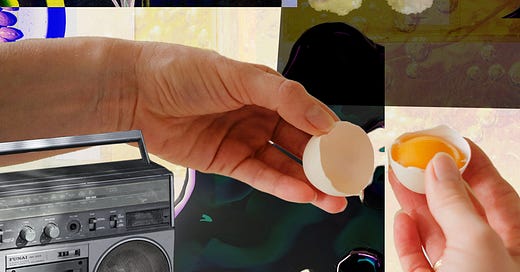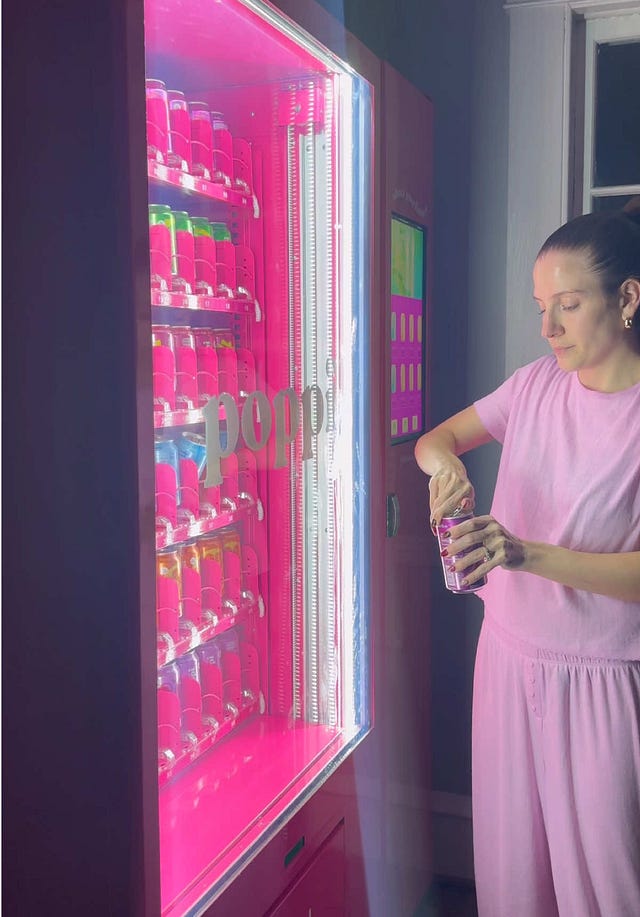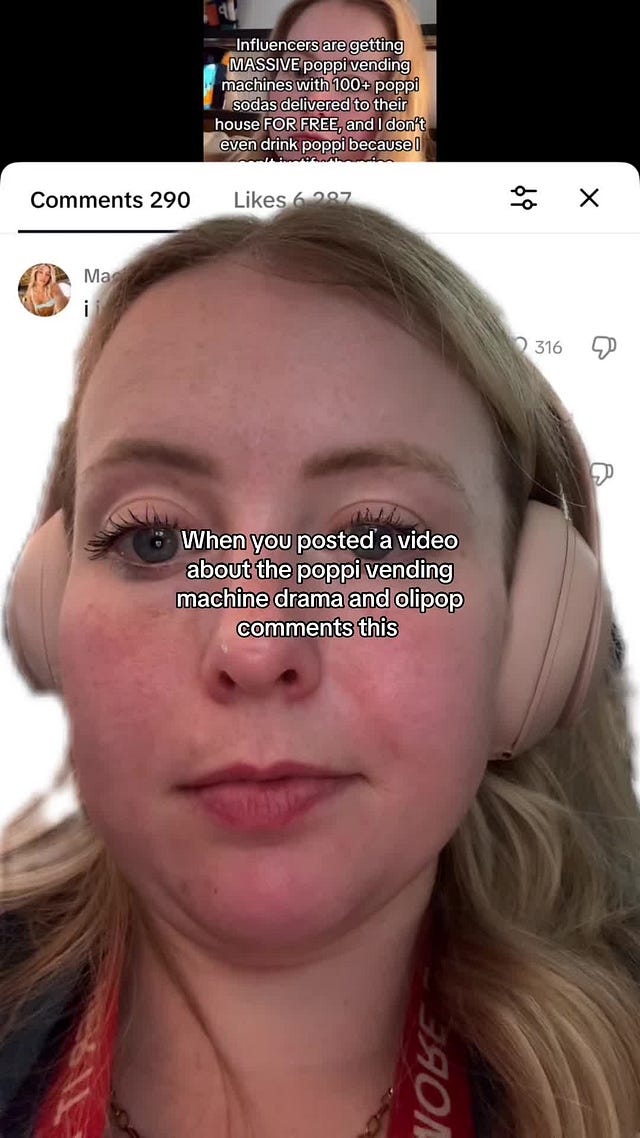Ok, Boomer: Poppi vs. Olipop, Sludge Content & Ingredient Households
A column dishing out three quick takes on Gen Z, from Gen Z, about their impact on culture, food, hospitality, and more.
Welcome back to Ok, Boomer. We’re Joel and Val, Carbonate’s resident Gen Z-ers, and we spend all day doomscrolling so you don’t have to. While social media can be a real rabbit hole, we’re here to guide you through it all! For issue #2, we’re breaking down Poppi’s influencer marketing flop, how sludge content is leading to a radio resurgence, and the intersection of scratch cooking and the ‘trad wife’ movement.
Prebiotic Sodas Throw Gut Punches:
Poppi vs. Olipop 🫧👊
When the prebiotic soda brand, Poppi, sent vending machines to 32 major influencers and creators, they likely didn’t anticipate the backlash that followed. Each Poppi-branded machine came fully stocked as a part of a high-budget, experiential gifting campaign designed to generate buzz just in time for the Super Bowl.
 Tiktok failed to load.
Tiktok failed to load.Enable 3rd party cookies or use another browser
The idea was that influencers would showcase the flashy machines as a part of their watch parties, creating a viral moment to go along with Poppi’s ad spots featuring creators Alix Earle, Jake Shane, and Robert Rausch.
Poppi’s marketing machine has always been great at garnering online attention, and has heavily relied on influencer marketing and extravagant PR packages to break through the noise. This campaign was no different, racking up over 35 million organic TikTok views. What was different was the reaction on social media.
Many TikTok users called out Poppi for being "out of touch," questioning the extravagance of the stunt, the sustainability of delivering the machines, and why Poppi only gave these machines to creators who earn millions from their social media content instead of leaving them in publicly accessible areas like college campuses.
 Tiktok failed to load.
Tiktok failed to load.Enable 3rd party cookies or use another browser
Poppi’s competitor, Olipop, wasted no time capitalizing on the controversy. They jumped into the conversation with comments like “pr boxes for real customers i say” and “also for the record, those machines cost $25K each lol”, fueling the backlash.
 Tiktok failed to load.
Tiktok failed to load.Enable 3rd party cookies or use another browser
Poppi’s team has since pushed back, with co-founder Allison Ellsworth posting a response video claiming much of the information circulating is inaccurate, including the $25,000 price tag for each machine. While Ellsworth’s response might have satisfied some, it was clear that she was reading from a prepared outline for the video, which many people called out in the comments. Fans were also disappointed by the lack of clarity surrounding how much the machines actually cost, and what Poppi would do to right their ‘wrongs.’
Much of the drama surrounding Poppi’s vending machine controversy appears to be fueled by creators and brands eager to capitalize on the initial backlash and draw attention to themselves. However, it’s important to remember that the outrage began with genuinely disappointed fans who saw the campaign as out of touch. Today’s loyal customers expect brands to be mindful of economic realities, sustainability, and the broader impact of their choices. Experiential marketing is more relevant than ever, and customers want to be part of the experience—not just watch from the sidelines.
Insight-OUT: If you're building a brand or community, make sure you engage your actual customers and fans, not just influencers.
Sludge Content Seeps into the Mainstream 🧪📱
Our attention spans are shrinking. In other news, the sky is blue. But for real—Gen Z cannot watch just one thing at a time. “Sludge content” has been around on TikTok for a few years, and is composed of multiple unrelated video clips, robotic text-to-speech narration, and animated captions—all at 2X speed—that combine to make one grotesquely engaging video. Warning: if you are over the age of 25, this video might make you carsick.
The highly over-stimulating content reflects Gen Z’s (and society’s) growing appetite for more information—and the simultaneous desire to escape into mind-numbing entertainment. Sludge content might not be a fit for most brands, but there’s no denying its grip on the attention economy, where businesses, media, and technology compete to monetize people’s attention. In a world ruled by short-form video, sludge cracked the code with long-form, audio-driven content—wrapped in a chaotic swirl of layered visuals and over-the-top graphics.
Ironically, one of the biggest winners in the sludge content trend? Old-school radio…
Keep reading with a 7-day free trial
Subscribe to Insight Out to keep reading this post and get 7 days of free access to the full post archives.







